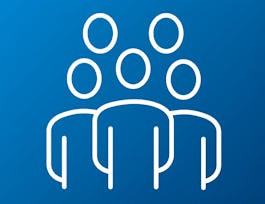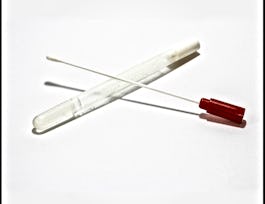This course provides a strong foundation in the history of smoking and other tobacco and nicotine use; the individual and public health impact; tobacco use prevalence trends in adults, youth and key subpopulations; and how cigarette smoking came to be, and remains to this day, the leading preventable cause of death in the U.S. and globally, despite the fact that tobacco control efforts have collectively constituted one of the most successful public health endeavors in our history.



What you'll learn
Understand the history of smoking and other tobacco/nicotine use; individual and public health impact; and tobacco use trends in key populations
Learn how smoking came to be and remains the leading preventable cause of death despite one of the most successful public health efforts in history
Explore the complex history of legal and regulatory challenges in a rapidly changing market, and how they continue to shape the landscape today
Skills you'll gain
Details to know

Add to your LinkedIn profile
3 assignments
See how employees at top companies are mastering in-demand skills


Earn a career certificate
Add this credential to your LinkedIn profile, resume, or CV
Share it on social media and in your performance review

There are 7 modules in this course
This module provides an overview of the history and current state of the tobacco epidemic. You will learn about the health effects of both combustible and non-combustible tobacco and nicotine products, the causes of smoking, and key trends in cigarette and other tobacco/nicotine product use.
What's included
8 videos10 readings2 discussion prompts
This module describes the strategies and tactics used by the tobacco industry that created and continue to perpetuate the smoking epidemic, and it also begins to explore the complexities of contemporary and potential future relationships between the public health community and the tobacco industry.
What's included
8 videos7 readings1 assignment
This module introduces the major aspects of tobacco control policy interventions and their effects on tobacco consumption and health historically, in addition to newer policy approaches. You will learn about non-governmental policy interventions, state and federal level policy, and global policy as they relate to tobacco control, and you will understand the importance of considering unintended consequences of policy interventions.
What's included
5 videos13 readings1 discussion prompt
This module provides a look into the legal strategies pursued to address the tobacco industry's impact on U.S. public health, covering the period of the 1950s to 2020 and beyond. Lectures and interviews provide first hand accounts of this fascinating and ongoing pursuit.
What's included
6 videos4 readings1 assignment1 discussion prompt
This module explores the concept of harm reduction as it relates to tobacco control and encourages you to think critically about the controversies that have been raise in this ongoing debate. You will learn about alternative products and where they fall on the continuum of risk, issues of adult cessation and youth initiation, and some potential paths forward in terms of policy.
What's included
6 videos8 readings1 discussion prompt
This module provides an overview of modeling and its role in tobacco policy and tobacco regulatory science with a focus on the U.S. federal policy context. Three examples of how modeling has been used in this field are covered: menthol cigarette bans, youth nicotine use, and forecasting future smoking prevalence.
What's included
8 videos6 readings1 assignment
This module describes the overall tobacco landscape, both in the U.S. and globally, and how tobacco control may look in the coming decades. Additionally, you will consider the "tobacco endgame" and complete a Peer Review assignment which allows you to choose an endgame strategy and analyze it. Finally, you will reflect on the issues within tobacco control that have been highlighted throughout this course.
What's included
5 videos4 readings1 peer review
Instructor

Offered by
Recommended if you're interested in Public Health

Johns Hopkins University

Imperial College London

Johns Hopkins University

Eindhoven University of Technology
Why people choose Coursera for their career




New to Public Health? Start here.

Open new doors with Coursera Plus
Unlimited access to 7,000+ world-class courses, hands-on projects, and job-ready certificate programs - all included in your subscription
Advance your career with an online degree
Earn a degree from world-class universities - 100% online
Join over 3,400 global companies that choose Coursera for Business
Upskill your employees to excel in the digital economy
Frequently asked questions
Access to lectures and assignments depends on your type of enrollment. If you take a course in audit mode, you will be able to see most course materials for free. To access graded assignments and to earn a Certificate, you will need to purchase the Certificate experience, during or after your audit. If you don't see the audit option:
The course may not offer an audit option. You can try a Free Trial instead, or apply for Financial Aid.
The course may offer 'Full Course, No Certificate' instead. This option lets you see all course materials, submit required assessments, and get a final grade. This also means that you will not be able to purchase a Certificate experience.
When you purchase a Certificate you get access to all course materials, including graded assignments. Upon completing the course, your electronic Certificate will be added to your Accomplishments page - from there, you can print your Certificate or add it to your LinkedIn profile. If you only want to read and view the course content, you can audit the course for free.
You will be eligible for a full refund until two weeks after your payment date, or (for courses that have just launched) until two weeks after the first session of the course begins, whichever is later. You cannot receive a refund once you’ve earned a Course Certificate, even if you complete the course within the two-week refund period. See our full refund policy.


